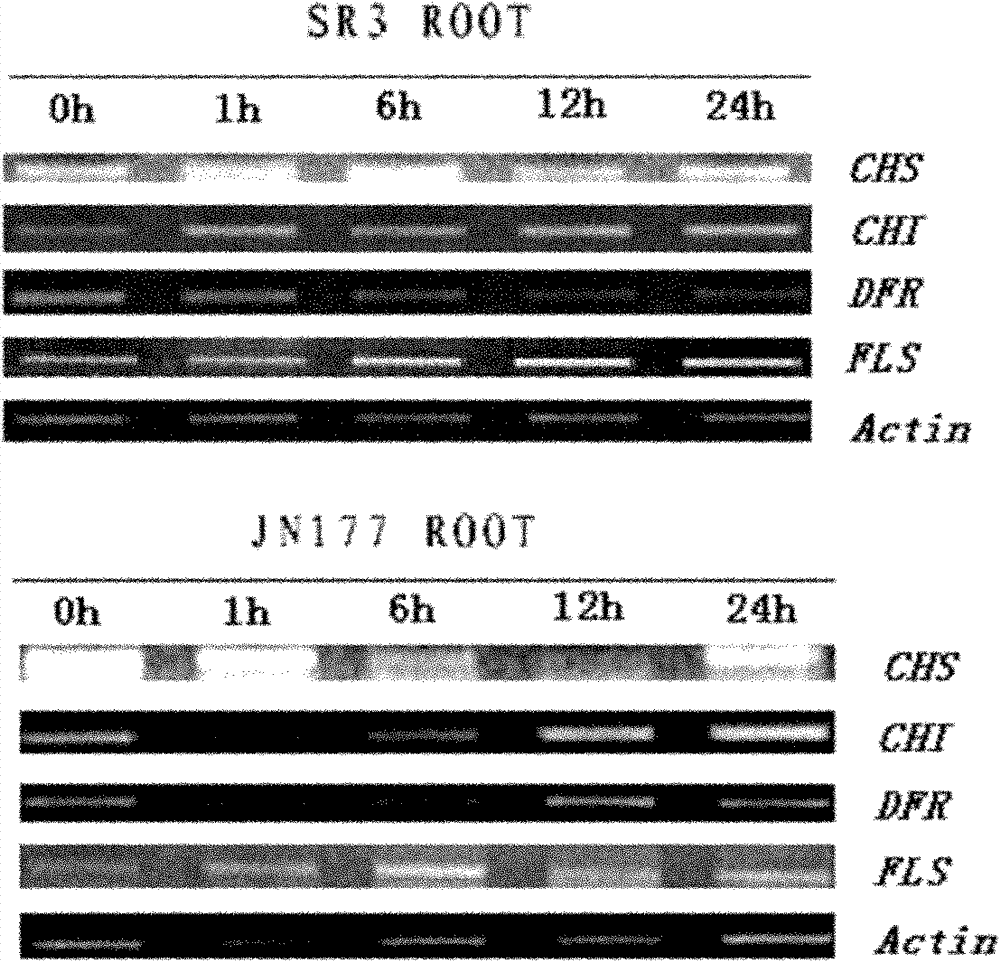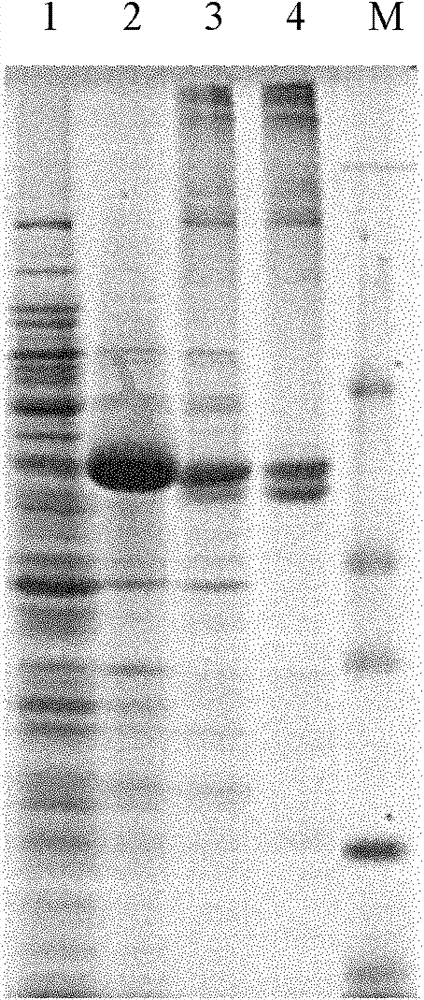Wheat salt-resistant and oxidation-resistant gene TaFLS and application thereof
An anti-oxidation and genetic technology, applied in the fields of application, genetic engineering, plant genetic improvement, etc., can solve the problems of poor knowledge of secondary metabolism and achieve the effect of improving antioxidant capacity
- Summary
- Abstract
- Description
- Claims
- Application Information
AI Technical Summary
Problems solved by technology
Method used
Image
Examples
Embodiment 1
[0041] Cloning of embodiment 1, TaFLS
[0042] 1.1 Extraction of wheat Total RNA
[0043] 1. Put the tissue material into a liquid nitrogen pre-cooled mortar, and fully grind it into powder in liquid nitrogen;
[0044] 2. After the liquid nitrogen is evaporated to dryness, transfer it to a 2ml centrifuge tube immediately, add about 1ml of Invitrogen’s TRIzol extract for every 100mg of material, after melting, repeatedly suck and blow with a sample gun, shake and mix the sample vigorously, and make the sample Fully lyse and place at room temperature for 5 minutes;
[0045] 3. Add 0.2ml of chloroform (chloroform), vigorously shake and mix for 15 seconds, and place at room temperature for 10 minutes;
[0046] 4.4°C, centrifuge at 12000rpm for 15 minutes;
[0047]5. Use a pipette to carefully suck out the upper aqueous phase, add it to a new 1.5ml centrifuge tube, add 500 μl of isopropanol (1:1 volume), mix well, and settling at -20°C for 30 minutes or overnight;
[0048] 6.4°...
Embodiment 2
[0121] Embodiment 2, prokaryotic expression analysis
[0122] 2.1 Construction of prokaryotic expression vector
[0123] The expression vector used was Pet32a, and the recipient strain was DE3. Hind III and EcoR I were used to perform double enzyme digestion on pET32a and the pMD18-T vector containing the target gene, respectively, and recover the large fragment of the vector and the small fragment of the target gene, and transform Escherichia coli DH10B competent cells after ligation with T4 DNA ligase. After the recombination, the prokaryotic expression vector with the target gene is obtained, and then the recipient strain DE3 is transformed to be competent for protein expression.
[0124] 1. Enzyme digestion of PET32a and pMD18-T
[0125] The plasmids of pET32a and pMD18-T were extracted by alkaline lysis method, and 10ul of each was taken for HindIII and EcoR I double enzyme digestion. The plasmid extraction method is as above, and the plasmid double enzyme digestion sy...
Embodiment 3
[0194] Embodiment 3, the construction of vector and transformation Agrobacterium
[0195] 3.1 Construction of 35S promoter plant expression vector
[0196] Plant expression vector pSTART is a binary vector containing 35S promoter and NPT II gene, and contains restriction endonuclease XbaI and BamHI sites in its multiple cloning site. Respectively use restriction endonucleases XbaI and BamHI to double digest the vector pSTART and the target gene fragment. The fully digested vector is separated by electrophoresis on 1% agarose gel, recovered by gel, and then connected with the double digested cDNA fragment to construct a plant expression vector. Enzyme digestion system, transform Escherichia coli DH10B competent, and identify recombinants. The connection, recovery, conversion and identification methods are the same as above. see results Figure 4 .
[0197] 3.2 Preparation of Competent Agrobacterium AGL1 / EHA105
[0198] (1) Pick a single colony of Agrobacterium tumefaciens...
PUM
| Property | Measurement | Unit |
|---|---|---|
| wavelength | aaaaa | aaaaa |
Abstract
Description
Claims
Application Information
 Login to View More
Login to View More - R&D
- Intellectual Property
- Life Sciences
- Materials
- Tech Scout
- Unparalleled Data Quality
- Higher Quality Content
- 60% Fewer Hallucinations
Browse by: Latest US Patents, China's latest patents, Technical Efficacy Thesaurus, Application Domain, Technology Topic, Popular Technical Reports.
© 2025 PatSnap. All rights reserved.Legal|Privacy policy|Modern Slavery Act Transparency Statement|Sitemap|About US| Contact US: help@patsnap.com



